|
[start]
|
documentary.de nicht-digitale fotografie
|
Aserbaidschan |
|
"Azerbaijan
is rich in natural resources and politically rather complicated. The former
West and East as well as fundamentalist neighboring countries follow their
own interests and widen their influence in Baku. Azerbaijan is fighting
a war with Armenia." Azerbaijan 1995.
|
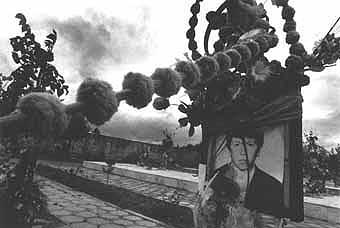 |
| Médecins sans Frontières Holland entered the country in early December, 1993, in cooperation with MSF-Belgium who had already been present in the country for three years. |
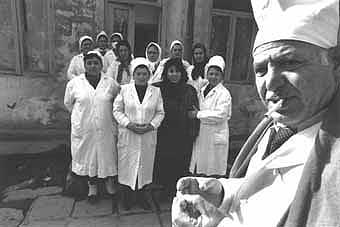 |
OBJECTIVES: 1. Assessment and surveillance of the medical situation of the displaced in the north of Azerbaijan. 2. Emergency preparedness for further deterioration in the medical situation in the country. 3. Medical supplies distribution to targeted health care structures, including supervision of drugs distribution, stock management and necessary training in drug usage and treatment protocols. |
| Geography Southwestern Asia, bordering the Caspian Sea, between Iran and Russia, landlocked Area total 86,600 sq. km includes the exclave of Naxcivan Autonomous Republic and the Nagorno-Karabakh region; border countries: Armenia, Georgia, Iran, Russia, Turkey Climate: dry, semiarid steppe |
Population 7,855,576 (1998 est.) Birth rate: 22.2 births/1,000 population (1998 est.) Death rate: 9.41 deaths/1,000 population (1998 est.) Infant mortality rate: 81.64 deaths/1,000 live births (1998 est.) Ethnic groups: Azeri 90%, Dagestani Peoples 3.2%, Russian 2.5%, Armenian 2.3%, other 2% (1995 est.) |
| Natural resources petroleum, natural gas, iron ore, nonferrous metals, alumina Industries petroleum and natural gas, petroleum products, oil field equipment; steel, iron ore, cement; chemicals and petrochemicals; textiles Agriculture cotton, grain, rice, grapes, fruit, vegetables, tea, tobacco; cattle, pigs, sheep, goats Exports: total value: $789 million (1996 est.) Imports: total value: $1.3 billion (1996 est.) partners: CIS, European countries, Turkey |
Religion Muslim 93.4%, Russian Orthodox 2.5%, Armenian Orthodox 2.3%, other 1.8% Languages: Azeri 89%, Russian 3%, Armenian 2%, other 6% (1995 est.) Government chief of state: President Heydar ALIYEV (since 18 June 1993) head of government: Prime Minister Artur RASIZADE (since 26 November 1996) |
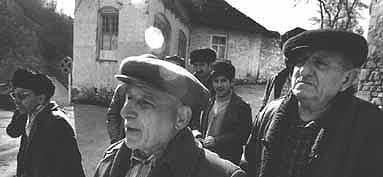 |
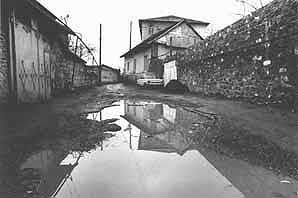 Azerbaijan is less developed
industrially than either Armenia or Georgia, the other Transcaucasian states.
It resembles the Central Asian states in its majority nominally Muslim population,
high structural unemployment, and low standard of living. Azerbaijan is less developed
industrially than either Armenia or Georgia, the other Transcaucasian states.
It resembles the Central Asian states in its majority nominally Muslim population,
high structural unemployment, and low standard of living. |
 |
|
| The economy's most prominent products are oil, cotton, and gas. Production from the Caspian oil and gas field has been in decline for several years, but the negotiation of more than a dozen production-sharing arrangements with foreign firms, which have thus far committed $30 billion to oil field development, should generate the funds needed to spur future industrial development. | ||
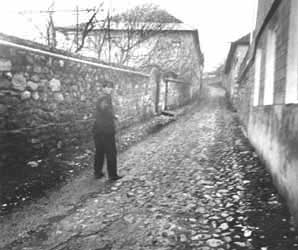 |
Azerbaijan shares all the formidable problems of the ex-Soviet republics in making the transition from a command to a market economy, but its considerable energy resources brighten its long-term prospects. |
| A major short-term obstacle to economic progress, including
stepped up foreign investment, is the continuing conflict with Armenia over
the ethnic Armenian-dominated region of Nagorno-Karabakh. Trade with Russia
and the other former Soviet republics is declining in importance while trade
is building up with the nations of Europe, Turkey, Iran, and the UAE. |
|
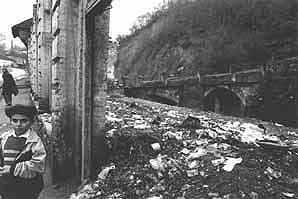 |
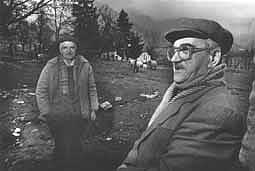 |
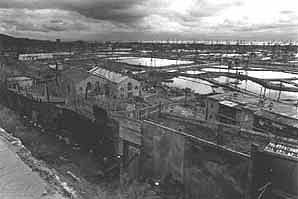 |
Environment-current issues: local scientists consider the Abseron (Apsheron) Peninsula (including Baku and Sumqayit) and the Caspian Sea to be the ecologically most devastated area in the world because of severe air, water, and soil pollution; soil pollution results from the use of DDT as a pesticide and also from toxic defoliants used in the production of cotton |
Irrigated land: 10,000 sq. km (1993 est.). Natural hazards: droughts; some lowland areas threatened by rising levels of the Caspian Sea |
|
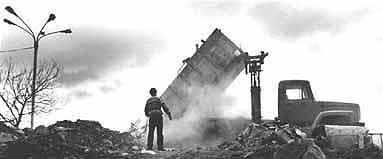 |
|
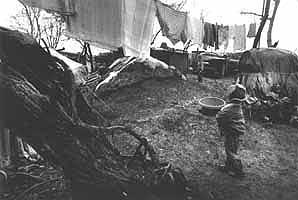 Current issues: Azerbaijan
continues to be plagued by an unresolved 10-year-old conflict with Armenian
separatists over its Nagorno-Karabakh region. The Karabakh Armenians have
declared independence and seized almost 20% of the country's territory,
creating almost 1 million Azerbaijani refugees in the process. Both sides
have generally observed a Russian-mediated cease-fire in place since May
1994. Current issues: Azerbaijan
continues to be plagued by an unresolved 10-year-old conflict with Armenian
separatists over its Nagorno-Karabakh region. The Karabakh Armenians have
declared independence and seized almost 20% of the country's territory,
creating almost 1 million Azerbaijani refugees in the process. Both sides
have generally observed a Russian-mediated cease-fire in place since May
1994.
Transnational issues Disputes-international: Armenia supports ethnic Armenians in the Nagorno-Karabakh region of Azerbaijan in the long-standing, separatist conflict against the Azerbaijani Government; Caspian Sea boundaries are not yet determined among Azerbaijan, Iran, Kazakhstan, Russia, and Turkmenistan |
| Médecins sans Frontières Holland is based in Barda, a region of 90,000 displaced in addition to its normal population of 117,000. The project presently covers the regions of Barda and Yevlah. |
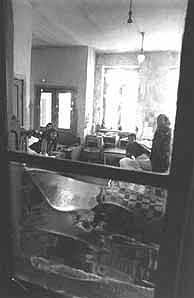 MEDICAL ACTIVITIES:
Médecins sans Frontières is presently supplying essential
medicines and supplies to eighteen health structures in the Barda and Yevlah
regions. The primary focus is the peripheral hospital level, which usually
consist of 2 to 3 doctors and 20 to 30 beds. MSF provides supplies on a
monthly basis and makes weekly visits to monitor drug usage and to provide
necessary training in the usage of the provided medications. For the peripheral
hospitals the organization supplies quantities of medications and supplies
to meet the majority of their needs. MEDICAL ACTIVITIES:
Médecins sans Frontières is presently supplying essential
medicines and supplies to eighteen health structures in the Barda and Yevlah
regions. The primary focus is the peripheral hospital level, which usually
consist of 2 to 3 doctors and 20 to 30 beds. MSF provides supplies on a
monthly basis and makes weekly visits to monitor drug usage and to provide
necessary training in the usage of the provided medications. For the peripheral
hospitals the organization supplies quantities of medications and supplies
to meet the majority of their needs.
There is a hierarchical structure of health facilities in the Barda region. At the lowest level are ambulantias, or health points. There are approx. 40 in the region which essentially function as clinics. These points may or may not have a doctor working in them. |
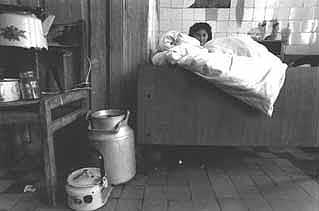 |
The second level of health care are the peripheral hospitals, and it is this level that Médecins sans Frontières is particularly interested in. These hospitals service towns of 1000 to 3000 residents as well as the displaced population. In general these hospitals have 20 to 30 beds and are staffed by two or three doctors. Usually the physicians consist of a pediatrician, a therapist (adult generalist) and possibly a dentist. The patient volume varies between 5 to 20 a day |
| Although there are beds available in the hospitals it is very rare that any patients actually stay in the hospital. Traditionally this was not the case. In the past the facilities did accommodate uncomplicated cases. Many of the hospital beds are now occupied by displaced peoples. Hospital heating is generally with wood and is poor. The hospitals are no longer supplied with food. These factors, in conjunction with very poor supplies of medicine, combine so that any seriously ill patients go on to the Barda hospitals and people with minor illnesses stay at home. | |
| Traditionally the peripheral hospitals receive medications from Barda Central Hospital. The smaller hospitals are able to request drugs on a monthly basis, but these requests seem to have little to do with what they receive. Most hospitals have not received any supplies in two to three months. |
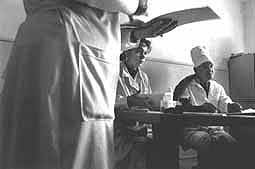 MEDICAL
TRAINING: The present training component consists of familiarization of
the physicians with new medications both through discussions and translated
information sheets. The biggest need in this area is Russian or Azeri literature
on the use of medications and on treatment regimes. The gaps in medical
knowledge between here and in the west are huge; vitamin and D5W injections
as treatment for hepatitis A, oral nystatin being used for itching, chronic
hypertension treated with intermittent intravenous injections of unknown
antihypertensives, babies being fed tea and sugar for the first twenty-four
hours of life. The list goes on and on, and is quite overwhelming. Individual
discussions with physicians may have some impact but this is diminished
if it can not be backed up with supporting written information. As traditionally
well educated people, with training and books that support their ideas they
are understandably reticent to change. MEDICAL
TRAINING: The present training component consists of familiarization of
the physicians with new medications both through discussions and translated
information sheets. The biggest need in this area is Russian or Azeri literature
on the use of medications and on treatment regimes. The gaps in medical
knowledge between here and in the west are huge; vitamin and D5W injections
as treatment for hepatitis A, oral nystatin being used for itching, chronic
hypertension treated with intermittent intravenous injections of unknown
antihypertensives, babies being fed tea and sugar for the first twenty-four
hours of life. The list goes on and on, and is quite overwhelming. Individual
discussions with physicians may have some impact but this is diminished
if it can not be backed up with supporting written information. As traditionally
well educated people, with training and books that support their ideas they
are understandably reticent to change. |
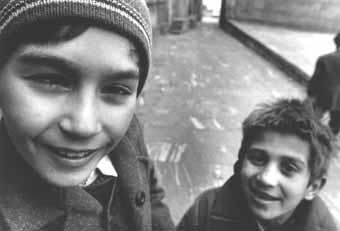 |
|
|||
|
[start]
|
[e-mail]
|
||